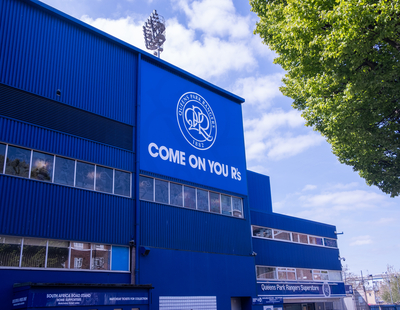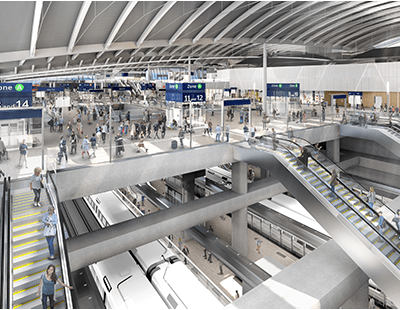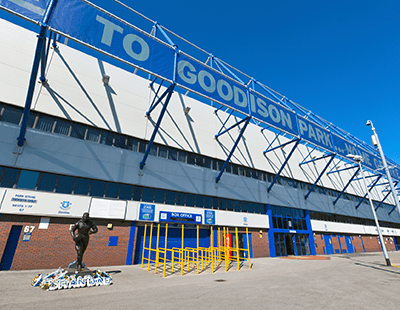A £20 million boost for the local economy could be delivered if the new stadium for Queens Park Rangers (QPR) gets the go-ahead.
The proposed community stadium, which would transform the Linford Christie Stadium site in West London, would include a community athletics facility next door and has been hailed by the club as the one final chance to stay in W12, QPR’s historic base.
The redevelopment of the Linford Christie Stadium, which is located next to Wormwood Scrubs and just over a mile from Loftus Road, QPR’s current ground, could create around 720 full-time jobs according to a report by consultants Hatch Regeneris.
The firm, in a report commissioned by the club, examined the impact the creation of a new home for QPR at the athletics stadium site could have on the wider area. The report outlined a range of benefits, including increased match-day spending from fans in the local area and an increase in QPR’s supply chain spending, as well as bringing regeneration and jobs to W12, reinvigorating the community sports facilities and encouraging more people to enjoy the green space offered by Wormwood Scrubs.
The club has already stated that the planned new stadium would stick to the existing Linford Christie Stadium site and would not encroach on the green open space of Wormwood Scrubs.
QPR, who have been playing at Loftus Road since 1917, originally commissioned the research after suggestions from fans and local residents to quantify the club’s economic and social benefit to the W12 postcode.
The club’s current economic value to the local area is estimated to be approximately £39.3 million a year – money that would be lost if QPR had to move out of the London Borough of Hammersmith and Fulham. A move to the new site near Wormwood Scrubs, on the other hand, could see QPR’s yearly contribution to the local economy increasing to nearly £60 million.
The club, which has the third-smallest ground in the Championship with a capacity of just over 18,000, has been looking to develop a new stadium for a number of years, as expanding Loftus Road is deemed unfeasible. As the report notes, redeveloping Loftus Road ‘is not impossible’ but would prove to be ‘prohibitively expensive and unacceptable’.
Previous plans for a new ground at Old Oak were thwarted after acquiring the land from the owner proved troublesome, and the club has previously stated that it is looking ‘at all possible options’ to secure the future of the club in Hammersmith & Fulham and ‘benefit the community’.
The Linford Christie Stadium redevelopment is seen as the last option for QPR to build a sustainable long-term future in the area it’s called home for so long.
Back in August, a spokesman for Hammersmith & Fulham council said new funding for the site was desperately needed.
“Linford Christie Stadium is a vital community asset in an open green space. We want to protect and enhance its use for athletics and recreation for the long-term benefit of residents. Due to severe budget pressures, our subsidy for the stadium in its current form is unsustainable. We have asked a masterplan architect to draw up options for the stadium site, which will be presented this year to the Wormwood Scrubs Charitable Trust for their final decision. We continue to talk to a number of stakeholders, including QPR, as part of this process."
Darren Wisher, managing director of Hatch Regeneris, said the company had worked through ‘various scenarios to understand the social and economic impact QPR brings to West London’, which included the impact of the club moving out of the W12 postcode, the construction of a new stadium, and the redevelopment of the Loftus Road stadium site as a residential-led scheme.
“Our report suggests that should the new stadium be built, there would be an increase in local employment both on a permanent basis and on match-day, a significant boost in London-based supply chain spending, and investment in housing stock and community assets, resulting in an additional £20 million spend in the local economy,” he said. “Conversely there would be a loss of £39 million to the area should QPR leave Loftus Road.”
While the transformation of the rundown athletics track and the construction of a new 30,000-seater ground could cost up to £265 million, the larger stadium would lead to higher attendances of nearly 650,000 a season. This is twice the current number and would help to pump more money into the local area on match-days.
Equally, the demolition of Loftus Road would free up land which could make way for around 550 new homes and a range of shops in an investment project costing an estimated £175 million. Some 1,200 residents could call the new properties their home, in turn spending roughly £6.9 million a year in the local area at various shops and businesses.
According to the report, the project in total could support around 1,285 full-time jobs. At the same time, it could inject £59.7 million into the local economy - some £20 million more than Loftus Road currently manages — while also generating £26.2 million in taxes for the Treasury.
However, the report also warned that QPR leaving the W12 postcode completely ‘would go beyond the loss of an anchor institution from the borough, the direct employment it supports and the wider benefits generated’, being a move that would be expected to seriously affect the local economy.









.png)










Join the conversation
Be the first to comment (please use the comment box below)
Please login to comment